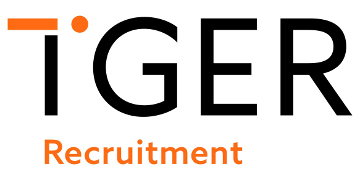The decision to drop diversity quotas is not in itself a bad thing: they don’t always work to increase representation of marginalised groups, in a long-term, genuine way.
But deprioritising diversity is the wrong way to go about boosting profit.
And yet Asos isn’t the only company to let diversity drop down its agenda recently.
The Black Lives Matter movement saw companies massively increase investment for DEI initiatives.
But the economic downturn has since led companies to backtrack on their commitments and progress.
As companies being forced to make layoffs, ethnic minority workers are being hit the hardest.
DEI budgets and DEI teams themselves have also become the victims of company cutbacks.
Jeremy Hunt is wrong: DEI is mission critical for British businesses
At X, formally known as Twitter, the DEI team was cut from 30 people to just two, and even the UK government was pressured to cut spending on equality and diversity measures and grants – or “woke” projects, in MPs’ words – earlier this year.
These DEI savings are a false economy.
Countless research shows that more diverse teams make greater financial returns.
Plus, staff at diverse and inclusive companies are more than five times as likely to stay for a longer tenure, reducing hiring spend for employers.
It makes no sense for Asos to deprioritise diversity in the name of profit. But there is an argument to be made for focusing less on DEI targets – and more on making hiring processes fairer – in pursuit of diversity.
Why your diversity strategy may not be working
In some cases, diversity quotas can help companies accelerate the pace of change when it comes to increasing the representation of marginalised groups on their teams.
And given how long employment and pay gaps have lain stagnant, companies are right to look for ways to bring about change sooner.
But there’s no guarantee that DEI targets will work.
At Asos, bosses failed to increase the representation of ethnic minority groups and women in leadership roles by the amount that their DEI targets required.
Even when DEI targets are met, there’s no guarantee that lasting and meaningful change will follow.
The first problem with diversity quotas is that they tend to overlook intersectionality.
For example, DEI targets commonly focus on increasing the number of ethnic minority candidates hired into senior roles, and increasing the number of female candidates hired into senior roles.
The focus isn’t on hiring more women of colour into senior roles.
Nor is it on hiring more ethnic minority LGBT+ workers, or more women with disabilities.
Yet these intersectional groups are the most underrepresented of all amongst workforces.
What makes a successful chief diversity officer?
The second problem with diversity quotas is that they can encourage hurried hiring and head counting – especially when there’s the incentive of bonuses for those that meet company targets.
This might improve diversity in the short term, but tokenism doesn’t foster inclusive company cultures.
And diverse hires who don’t feel included are less likely to feel able to speak up and be heard, rise up through the ranks, or stay in their new roles for long.
The solution is simple and backed by stacks of evidence: focus on hiring the best candidate for each role, rather than candidates that come from certain backgrounds.
Gender and age bias in the workforce: what can we do about it?
Diversity – and the increased financial returns which we know diverse teams produce – will follow organically, and eliminate the need for diversity targets in the first place. Unlike diversity targets, this approach also ensures that increased diversity lasts.
To identify the best candidates for roles, the first step is to anonymise applications and redact personal information such as candidates’ names, personal pronouns and postcodes.
This allows hiring teams to assess applications without bias clouding their judgement.
The next step is to use applications to ask candidates questions based on real work scenarios, designed to test whether individuals have the skills needed to succeed in specific roles.
This anonymous, skills-focused approach is the fairest and most accurate way to predict candidate performance.
It just so happens that when companies assess candidates’ true potential, diverse talent shines through.
At Applied, our research shows that this approach increases the number of ethnic minority hires by up to 300%, and increases the number of women hired into senior roles by up to 70%.
Plus, hiring based on merit rather than tokenism helps foster inclusive cultures, and ensures diverse hires have the skills needed to succeed in their new roles.
As a result, these hires are more likely to stay.
The business case for diversity – and evidence for using anonymous, skills-based hiring processes to achieve it – is clear. Now it's up to Asos to rethink its approach.
Khyati Sundaram, is CEO of recruitment software provider Applied










